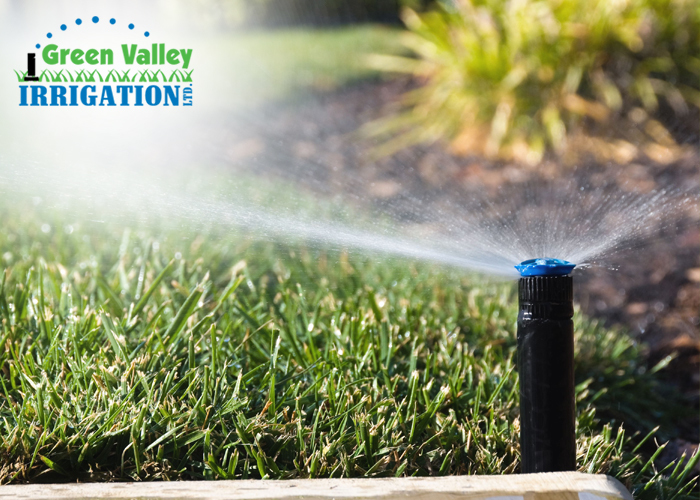Homeowners looking for irrigation systems in Toronto often have a hard time figuring out the best product for their home. A high-quality one can be used to water the plants, shrubs, grass, and trees in your garden. No landscape design can be complete without an appropriate sprinkler and avoiding them can be a costly mistake. It’s important to have a working irrigation system if you want to see your garden alive and thriving. By choosing the plants wisely and considering ones with the same water needs, you can ensure your garden is easy to manage. Here are 4 types of irrigation systems you should know about which can make gardening simple and hassle-free.

Different Types of Irrigation Systems
1. Sprinkler Irrigation
In this system, the water is supplied overhead instead of being supplied directly to the roots. This is usually done in the form of a downpour. There are numerous varieties available, so all you need to remember when choosing one is that they all serve the same purpose. However, know that this type of an irrigation system allows you to hydrate a much larger area of your garden.
Benefits
- Can be Used Anywhere – This is the most versatile form of irrigation system and is easier to maintain, even over large open spaces. While other systems rely on gravity and the slope on the land to do their work, sprinklers can be used anywhere.
- Covers Larger Areas – They are one of the most cost-effective ways of covering large gardens and yards. This is what makes it a great choice for homeowners who love gardening and have plants over a large area that need to be watered regularly.
2. Trickle/Drip Irrigation
This irrigation system is perhaps the most popular type. In a nutshell, a drip irrigation system is a process which laces your garden with irrigation lines that supply water directly to the roots of the plants. It does so by gradually dripping water into them, making them one of the most efficient systems available, since it hydrates the plants without wasting any water. Surface watering systems use a lot more water since it has to go through the soil to reach the roots. Though a useful method for hydrating the exterior of the plants, remember the roots need water the most.
Benefits
- Efficient Usage of Water –It is by far the best method to save the natural resource. Not only does it use up a much lesser quantity, but it also prevents evaporation since the water supply is beneath the surface.
- Reduces Growth of Weed – Since the water is laced directly to the roots of the plants, it rarely strays far. This means any rogue weeds that may be growing in the soil won’t receive the hydration they need to grow, ultimately preventing them from growing at all.
3. Subsurface Irrigation
This method is very similar to the trickle/drip method since it distributes the water through emitters and tubes. But, as you can guess by the name, the tubes are hidden beneath the surface. This method of watering landscape was discovered in Israel and is ideal for areas that have a sandy soil type or hot and arid weather.
Benefits
- Potential for Saving Energy – The irrigation system operates at relatively low pressure and delivers smaller flow rates. This allows for it to be operated with much smaller pumps, which can be an important consideration for places with low water supply. These are the characteristics that help save energy.
- Lower Labour Requirements – Once the system is installed, the labour needed manually to operate it is considerably lesser than that needed for a surface irrigation system. It also lends itself to automation, which helps reduce labour even further.
4. Surface Irrigation
The sprinkler system waters the plants from above, the trickle/drip system waters its roots and the surface irrigation are somewhere in between both. Though there are different forms available, they all use gravity and the shape of the landscape to flood the area. In simpler words, when water is poured on the ground, the land naturally allows itself to distribute across the soil.
Benefits
- Best Usage of Rain Water – Surface irrigation generally requires homeowners to make adjustments in the landscape to ensure the water is distributed equally. It comes down to shaping the land in a way which allows water to flow naturally and reliably to irrigate the plants. Due to this, plots that use surface irrigation are effective at using rainwater since the land has already been optimized for water flow.
- Cheap and Easy – This is one of the most ancient irrigation techniques and hence, doesn’t need any sophisticated technology to work. However, with the introduction of modern innovations over time, the surface irrigation system has become refined, making them more diversified to meet every homeowner’s needs.
Regardless of the kind of irrigation system you choose for your landscape, one thing you’ll need for sure is the right team to install it. Hire an expert irrigation system installer in Toronto who will get the job done right the first time. This will help ensure good water management on your property along with giving you a lush green lawn and enhancing the curb appeal of your property.

